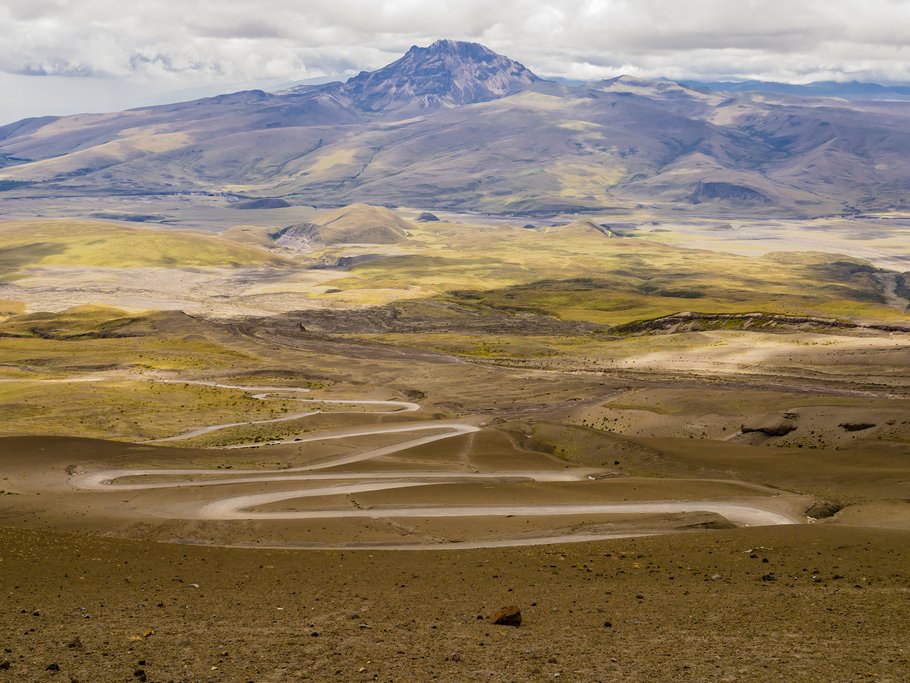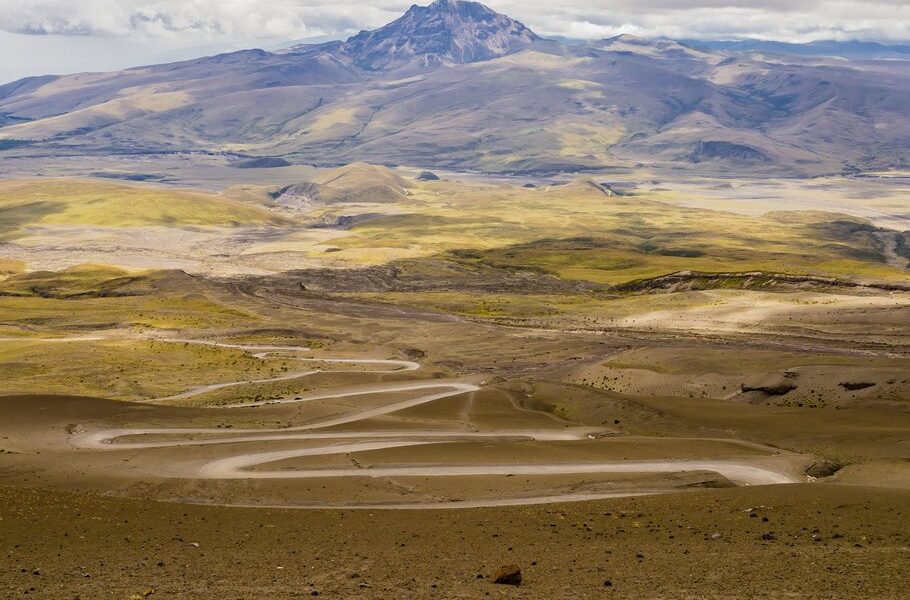
In the central highlands south of Quito, Cotopaxi province boasts some of Ecuador’s most popular attractions. As well as the eponymous volcano, there are charming market towns, shimmering lakes, evocative festivals, nature reserves and much more to explore. _x000D_
## Exploring the Majestic Cotopaxi Region: A Journey Through Ecuador’s Avenue of Volcanoes
In the early years of the 19th century, the esteemed German explorer and naturalist, Alexander von Humboldt, bestowed upon the parallel ranges of the Andes Mountains, stretching southward from the vibrant city of Quito, the evocative title of the Avenue of the Volcanoes. The Cotopaxi region, an area roughly equivalent in size to the American state of Delaware, lies nestled at the very heart of this awe-inspiring “avenue.” The undisputed centerpiece of this region is the majestic, conical, and perpetually snow-capped peak of Cotopaxi. This stratovolcano stands as one of the highest-altitude active volcanoes found anywhere in the world, presenting an unforgettable and breathtaking spectacle for all who behold it.
While the imposing Cotopaxi volcano undoubtedly serves as a major magnet, drawing countless travelers to this remarkable region, which enjoys convenient accessibility from major urban centers such as Quito and Cuenca, as well as a host of other well-established tourist hubs, it is important to recognize that the volcano represents only a fraction of the region’s extensive appeal. The Cotopaxi region unveils a tapestry of dramatic Andean landscapes, offering captivating glimpses into the enduring traditional ways of life of its inhabitants. Visitors can immerse themselves in the vibrant energy of riotous festivals, and venture into the depths of little-explored nature reserves, each brimming with its own unique allure and secrets.
## Immersing Yourself in the Wonders of Parque Nacional Cotopaxi
Parque Nacional Cotopaxi stands as one of the most frequently visited protected areas in the entire nation, encompassing a sprawling expanse of approximately 205 square miles. Throughout the year, this national park attracts a steady stream of visitors, all eager to capture that perfect close-up photograph of Cotopaxi’s iconic, perfectly symmetrical cone. Many also come to leisurely amble through the surrounding *páramo*, the region’s distinctive rolling alpine tundra ecosystem, hoping to encounter some of its unique wildlife, such as the elusive hummingbird, the cunning Andean fox, or the graceful white-tailed deer.
Within the boundaries of Parque Nacional Cotopaxi, visitors can explore a museum, albeit one that some may find less than spectacular. However, the park more than compensates with its network of walking trails, providing ample opportunities for exploration and immersion in the stunning landscape. A popular objective for many day-trippers is a trek to the José F. Ribas Refuge, a high-altitude shelter offering respite and panoramic views. To ensure a truly rewarding experience within the park, it is paramount that visitors are thoroughly acclimatized to the high altitude before embarking on their journey. This acclimatization period is crucial for avoiding altitude sickness and maximizing enjoyment of the park’s wonders. The air is significantly thinner at these elevations, and proper preparation is essential for a safe and memorable visit to Parque Nacional Cotopaxi.
## The Allure and Challenge of Climbing Cotopaxi
The opportunity to ascend the slopes of Cotopaxi is a significant draw for adventurous travelers from across the globe. It is important to remember that Cotopaxi is an active volcano. In the past, a significant eruption occurred in January 2016, and historically, eruptions have inflicted devastation upon the nearby town of Latacunga. Consequently, the Ecuadorian authorities sometimes temporarily close the volcano to climbing, although it was open for ascents as of mid-2018.
One of the compelling aspects of climbing Cotopaxi is that its peak, reaching an elevation of 19,347 feet (5,897 meters), is within reach of climbers with relatively limited mountaineering experience. This is providing they are in good physical condition, enjoy robust health, are properly acclimatized to the demanding altitude, and are accompanied by a qualified and experienced professional mountain guide. For seasoned mountaineers, the ascent of Cotopaxi presents a satisfying and rewarding challenge. The ascent typically takes around five hours, with climbs generally commencing around midnight. This early start allows sufficient time to reach the summit and explore its features by the time the sun rises, offering breathtaking panoramic vistas. The descent from the summit usually requires two to three hours. The entire experience is a testament to the power and beauty of nature, and a profound achievement for those who undertake it.
## Experiencing the Vibrant Mama Negra Festivals of Latacunga
Latacunga, the capital city of the Cotopaxi province, is located approximately 56 miles (90 kilometers) south of Quito. This attractive market town serves as an excellent base for exploring the broader Cotopaxi region. Latacunga is also an enjoyable destination in its own right, offering visitors the opportunity to appreciate the well-preserved colonial architecture that graces its downtown area.
However, Latacunga is most renowned for its two distinct Mama Negra festivals, which take place at the end of September and during the week of November 11th. These festivals are among Ecuador’s most captivating celebrations, and travelers are warmly invited to participate in the festivities or simply join the enthusiastic crowds as spectators. The festivals feature vibrant marching bands, elaborate parades, and an atmosphere of general revelry and joyous celebration. The Mama Negra festivals offer a unique and unforgettable glimpse into the cultural heart of the region.
## Immerse Yourself in Local Life at the Saquisilí Market
Few activities provide a deeper understanding of the daily lives of the people inhabiting the central highlands of Ecuador than a visit to a traditional rural market. For the majority of the week, the town of Saquisilí, situated approximately 12.5 miles (20 kilometers) north of Latacunga, maintains a quiet and subdued atmosphere. However, every Thursday, Saquisilí transforms into the vibrant and bustling hub of the surrounding region, attracting vendors and shoppers from far and wide.
The bustling market, which sprawls across several plazas and numerous streets, may not be as widely known as its counterpart in Otavalo, but this relative obscurity contributes to its more authentic and genuine feel. The market springs to life around 7:00 am with a lively and often pungent livestock sale, featuring a diverse array of animals ranging from donkeys to alpacas. As the morning progresses, the market’s focus shifts to other goods, including textiles, fresh fruits and vegetables, household items, electronics, and a wide assortment of other merchandise. A variety of local food options are also available, offering visitors the chance to sample regional culinary specialties. For those with an adventurous palate, the market even offers the opportunity to try *cuy*, a traditional Andean delicacy consisting of roasted guinea pig.
## Embark on an Unforgettable Journey Around the Quilotoa Loop
The Quilotoa Loop, a circuit spanning approximately 125 miles (200 kilometers), encircles the mesmerizing emerald-green waters of Quilotoa Lake. This loop is renowned as one of the most popular excursions in the Ecuadorian highlands. Depending on the chosen route and mode of transportation, completing the loop can take anywhere from a single day to two weeks. This makes it an ideal option for travelers who have limited time but are eager to experience the essence of life in the highlands.
While guided tours are readily available, the Quilotoa Loop is easily navigable independently, allowing for a more personalized and flexible experience. Along the route, travelers will find numerous opportunities for side trips and engaging activities, such as horseback riding. The Cotopaxi region offers a wealth of opportunities for equestrian adventures, catering to those with a passion for horseback riding.
## Unveiling the Natural Wonders of Reserva Ecológica Los Ilinizas
The northern segment of the Quilotoa Loop meanders through the picturesque, horseshoe-shaped Reserva Ecológica Los Ilinizas, a protected area that warrants deeper exploration. Encompassing over 900 square miles (2,331 square kilometers) of diverse ecosystems, including *páramo* grasslands, cloud forests, and rugged mountain terrain, the reserve is dominated by the striking twin peaks of Iliniza Sur (Southern Iliniza), reaching an elevation of 17,218 feet (5,248 meters), and Iliniza Norte (Northern Iliniza), standing at 16,818 feet (5,126 meters).
Both Iliniza Sur and Iliniza Norte present climbing opportunities for mountaineers and hikers. However, it is crucial to note that Iliniza Sur should only be attempted by experienced and highly skilled mountaineers due to its technical challenges. Iliniza Norte, on the other hand, can be scaled by fit and acclimatized hikers who are accompanied by an experienced mountain guide. For many, Iliniza Norte serves as an excellent training ground to prepare for a more challenging ascent of Cotopaxi. Less experienced or less energetic travelers can still enjoy exploring the terrain surrounding the base of the mountains, unburdened by the large crowds that often gather in Parque Nacional Cotopaxi. Reserva Ecológica Los Ilinizas provides a more secluded and intimate experience of the Andean landscape.
## Discover the Indigenous Art of Tigua
The tiny settlement of Tigua, conveniently located along the Quilotoa Loop, has cultivated a renowned school of indigenous art, making it an easy addition to any Quilotoa Loop itinerary. The Galería Arte de Tigua, operated as a cooperative, showcases the remarkable artwork created by local artists. Known as the Tigua style, this distinctive art form typically involves paintings on sheepskin canvases.
The iconic Cotopaxi volcano frequently appears in the imagery, alongside vivid depictions of daily life, religious celebrations, ancient myths and legends, and the breathtaking highland scenery that defines the region. Visitors have the opportunity to purchase these unique pieces of art, as well as high-quality woven baskets and finely decorated boxes, supporting the local artists and taking home a tangible reminder of their journey through the Cotopaxi region.
B-701

